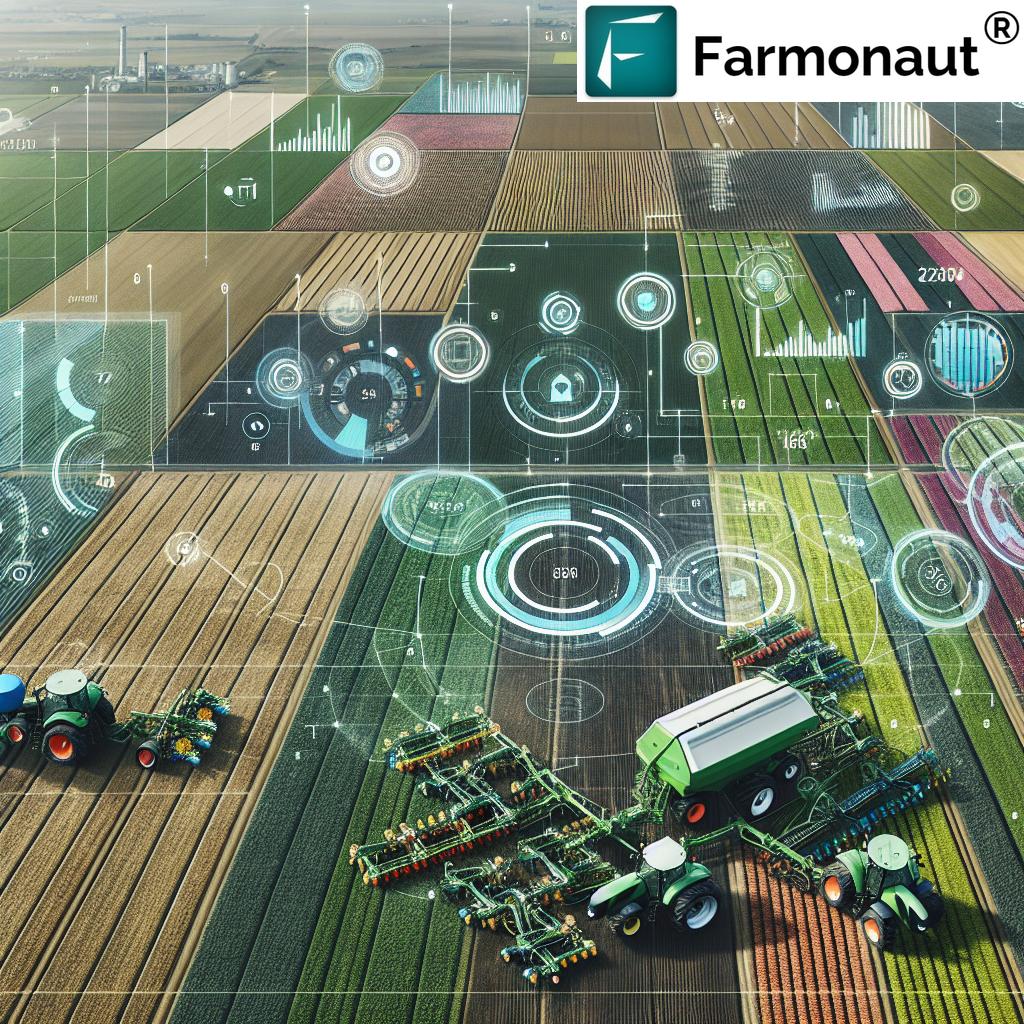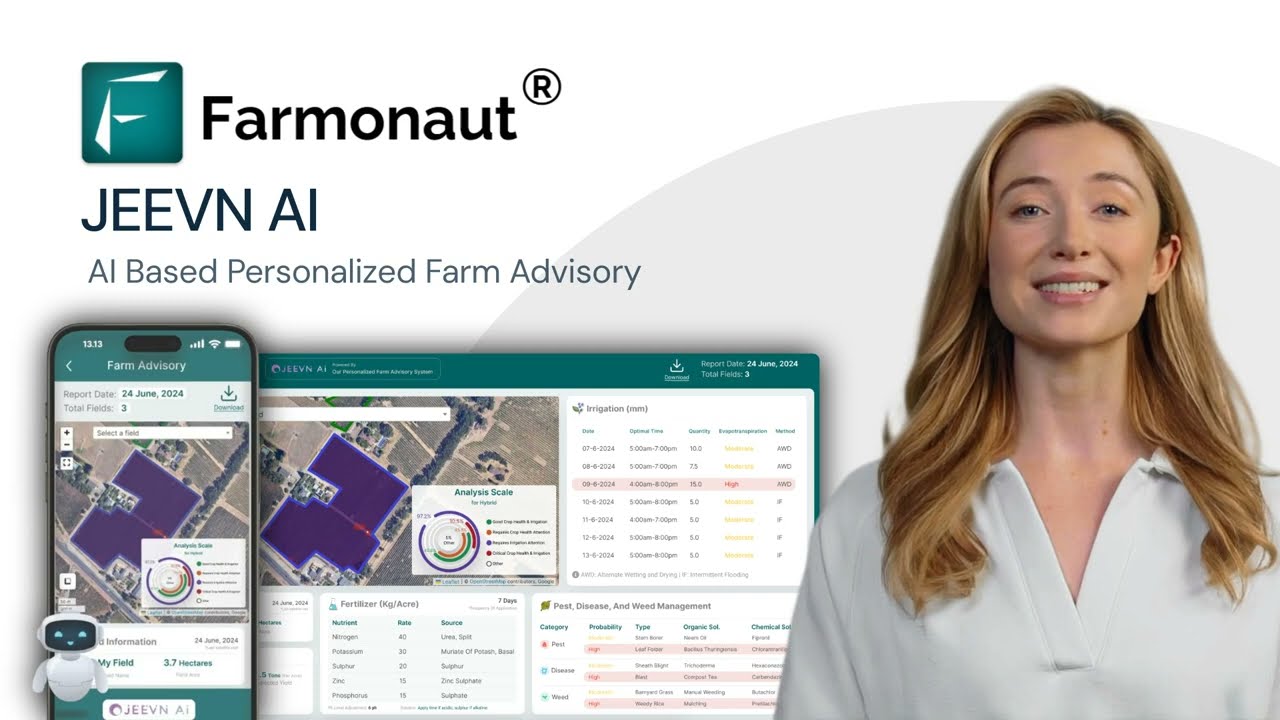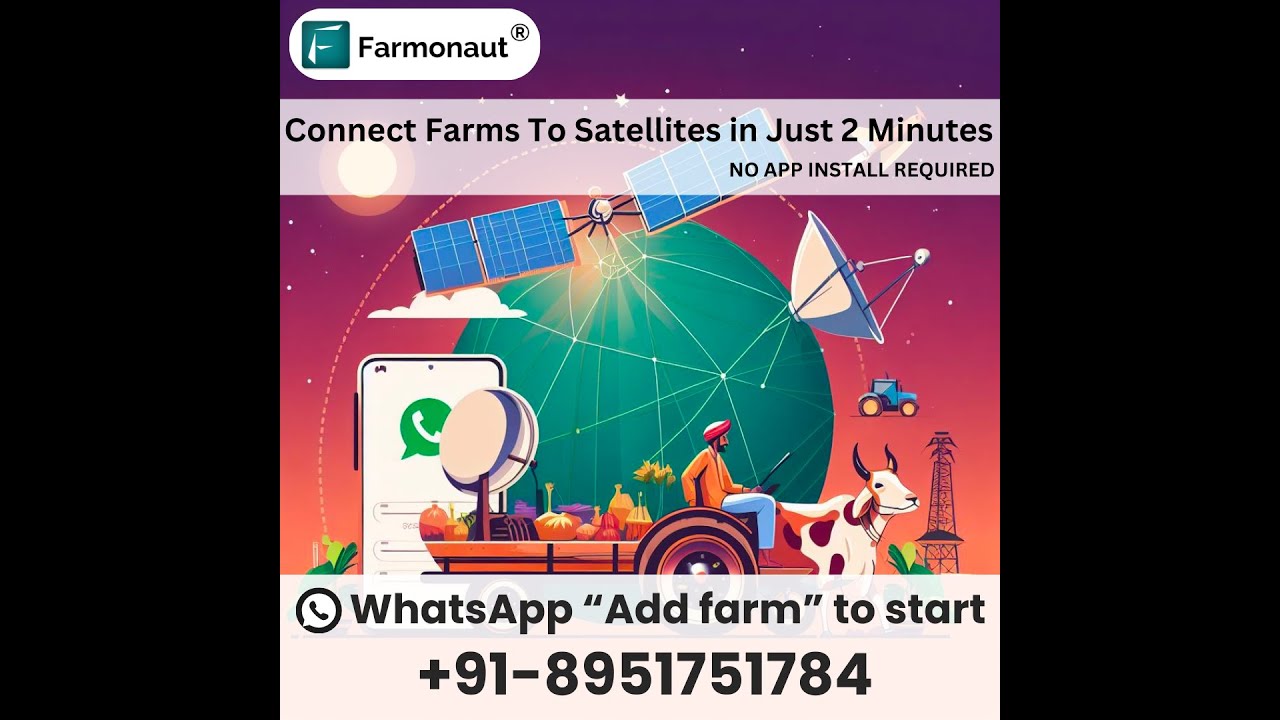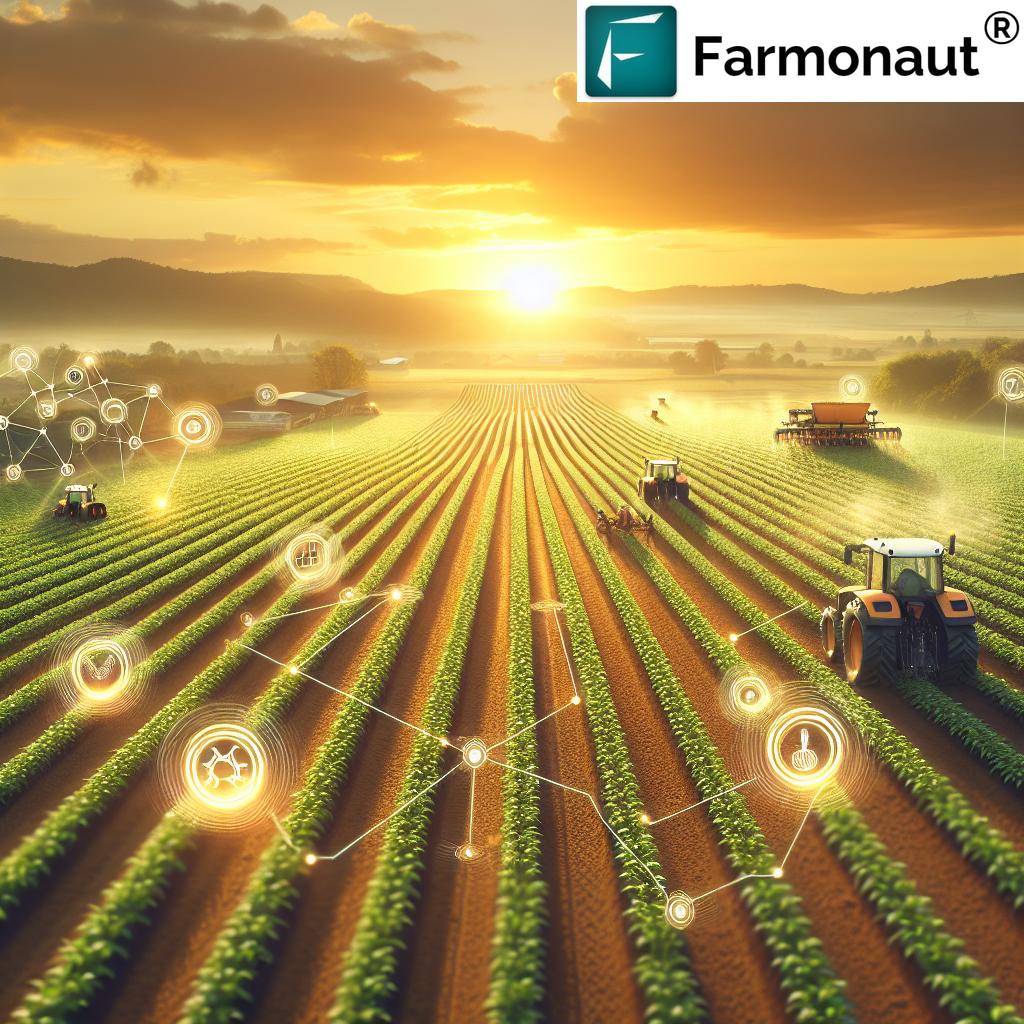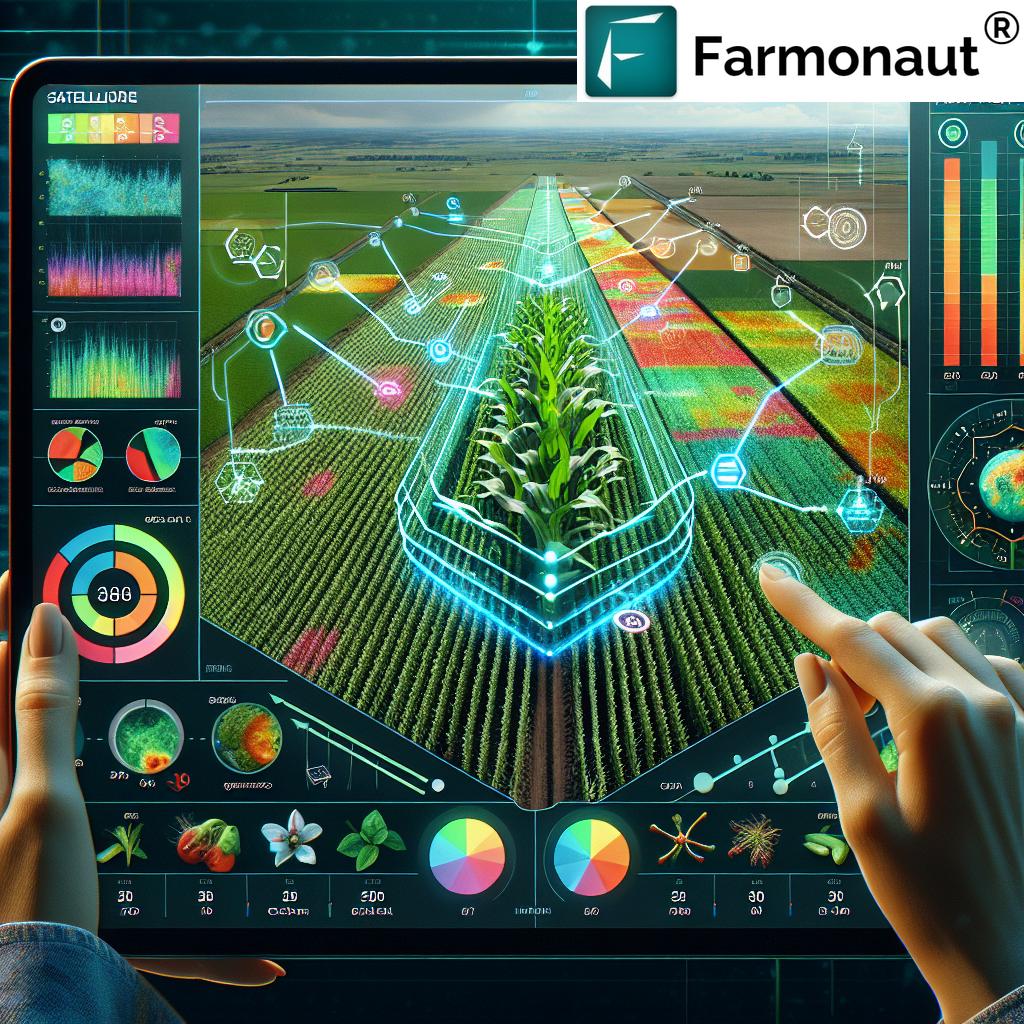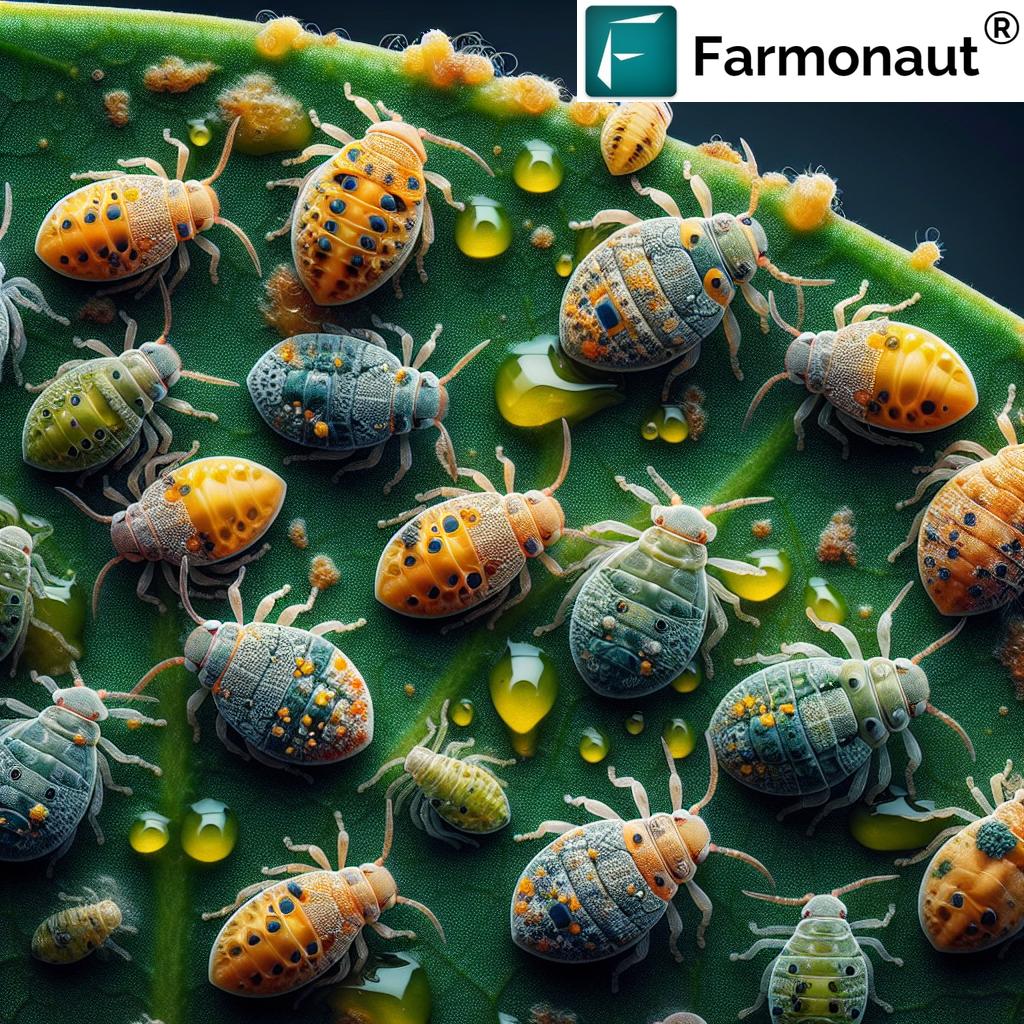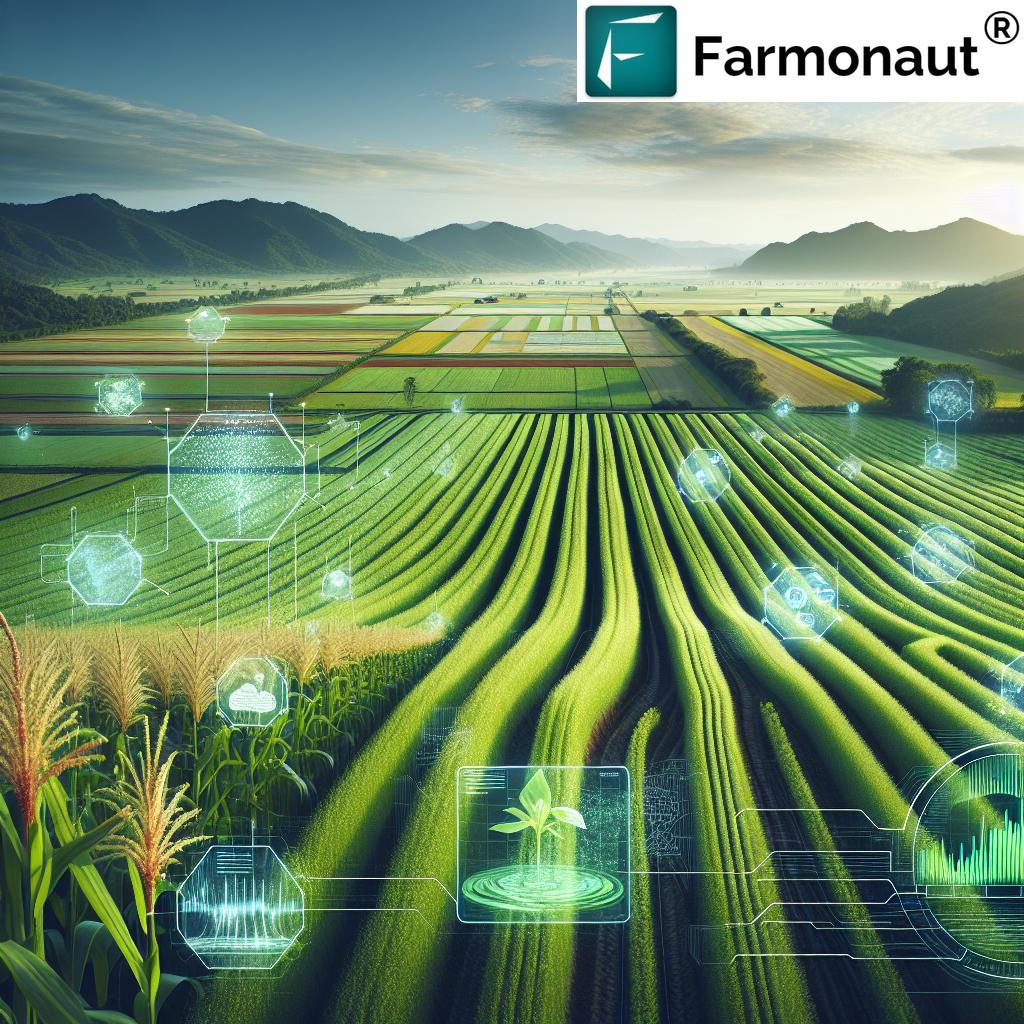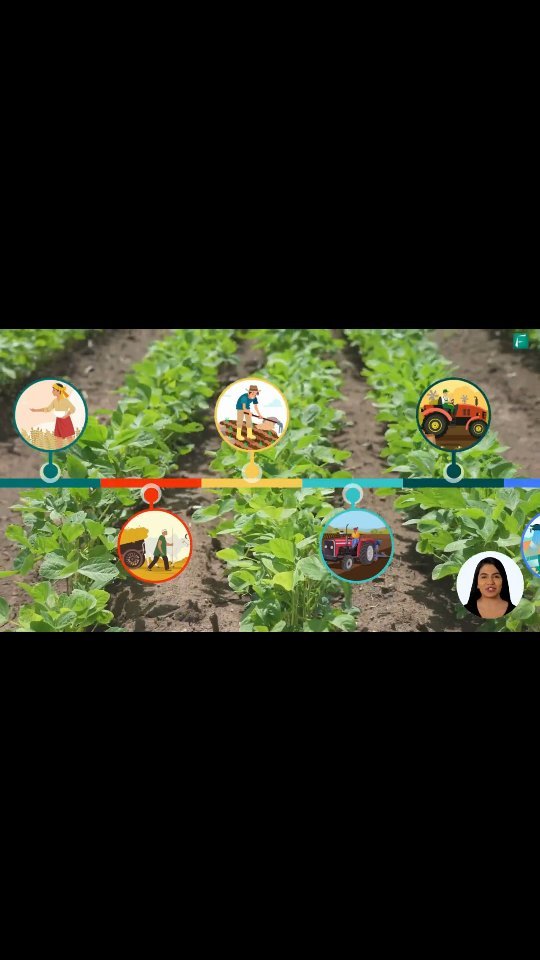Precision Farming Control: 7 Technologies for High Yields
“Precision farming can increase crop yields by up to 20% using advanced data management and smart technologies.”
Table of Contents
- Introduction to Precision Farming Control
- Key Components of Precision Farming Control
- The 7 Transformative Precision Farming Technologies
- Applications of Precision Farming Control
- Comparative Table: 7 Technologies in Precision Farming
- Benefits of Precision Farming Control
- Challenges and Considerations
- How Farmonaut Empowers Precision Agriculture
- Future of Smart Precision Farming Control
- Frequently Asked Questions
Introduction to Precision Farming Control
As agriculture moves into the era of data-driven innovation, precision farming—frequently called precision agriculture—emerges as a transformative approach that leverages advanced technology solutions to boost crop yields, enhance resource management, and promote sustainability. Using GPS-guided systems, IoT sensors, drones, advanced analytics, and cutting-edge management software, precision farming allows growers to monitor and manage every square meter of their fields with unparalleled accuracy.
The control over soil health, moisture, fertilizer application, and crop health monitoring these technologies provide revolutionizes agricultural practices. This approach minimizes waste, reduces costs, and ensures a more sustainable future by optimizing every input and process across the farm.
Why is precision farming control a game changer?
- Traditional agriculture often treats entire fields uniformly, missing the inherent variations in soil properties, moisture levels, and crop needs. Precision technologies unlock the ability to map, monitor, and manage these subtle variations, resulting in significant improvements in efficiency and profitability.
- Precision farming control harnesses detailed geospatial data, real-time sensing, and sophisticated software to give farmers complete command over all aspects of their operation—from seeding to harvesting.
“Over 70% of farmers adopting precision agriculture report significant input cost savings through optimized resource use.”
Key Components of Precision Farming Control
Let’s explore the essential building blocks that make precision farming control possible in today’s dynamic agricultural landscape.
-
Global Positioning System (GPS) & Geographic Information Systems (GIS):
GPS enables farmers to pinpoint the precise location of every area within their fields, while GIS software manages, processes, and displays spatial data. This powerful combination is crucial for creating detailed maps of soil properties, moisture levels, and crop health, which drive all subsequent precision practices.
-
Variable Rate Technology (VRT):
Variable Rate Technology (VRT) enables targeted application of inputs such as fertilizers, pesticides, seeds, and water—applying them at the **optimal rate** for different zones within the field. VRT not only improves yield but also minimizes waste.
-
Drones & Remote Sensing in Agriculture:
Drones (UAVs) equipped with multispectral cameras and sensing capabilities provide aerial imagery for ongoing monitoring of crop health, water stress, pest detection, and variability across fields.
-
IoT Sensors for Real-Time Monitoring:
IoT sensors embedded in the soil or mounted on equipment deliver continuous monitoring of variables like moisture, nutrient content, and temperature for precision control of irrigation, fertilization, and disease forecasting.
-
Farm Management Software Platforms:
These data management platforms consolidate field data from all sources—GPS, sensors, drones, and satellites—empowering farmers with insights through advanced agricultural analytics and AI-driven decision support.
The 7 Transformative Precision Farming Technologies
Seven core technologies form the backbone of smart farming control today. Each of these plays a unique role in increasing yield, improving resource efficiency, and protecting the environment.
1. Satellite Imagery & Remote Sensing in Agriculture
Satellite imagery provides large-scale, frequent, and highly detailed perspective over entire fields. Through indices such as NDVI (Normalized Difference Vegetation Index), satellites deliver data about crop vigor, soil moisture levels, and even emerging pest or disease stress.
Remote sensing in agriculture offers a non-invasive way to monitor vast tracts of land, especially in regions where on-the-ground scouting can be expensive or impractical.
- Example: Farmonaut’s crop health monitoring leverages multispectral satellite images to deliver frequent, real-time insight into crop status, allowing optimized input decisions and timely interventions.
- Benefits include early detection of yield threats, irrigation optimization, and improved resource allocation.
Read more about satellite-based crop monitoring applications
2. Advanced Soil Sensors for Field Monitoring
Advanced soil health monitoring uses smart IoT sensors for continuous, real-time tracking of moisture levels, nutrient content, salinity, and even microbial activity. These sensors allow for site-specific management, ensuring optimal soil conditions tailored to each crop zone.
- Technologies vary from wireless sensor networks to automated soil probes that report moisture and pH data directly to farm management software.
- Example: Smart irrigation solutions use sensor data to deliver water only when and where needed, reducing waste and improving yields.
Discover more about IoT-enabled soil and moisture management
3. Variable Rate Technology (VRT) for Targeted Input Application
Variable rate technology uses data analytics from sensors, satellites, and soil maps to adjust the application of fertilizers, pesticides, seeds, and water across different field zones. By delivering precise amounts where they’re most needed, VRT not only reduces input costs but also supports more uniform crop growth and stronger yields.
- Example: VRT-equipped fertilizer spreaders can adjust the rate across the field based on soil nutrient maps—ensuring that no area is over- or under-supplied.
- Supports environmental sustainability by minimizing chemical runoff and targeted resource use.
Learn about the latest in VRT and smart input control
4. Drones (UAVs) & Drone Imagery for Crop Health
Unmanned aerial vehicles (UAVs), or drones, fly above the field to capture up-to-date, high-resolution drone imagery. Multi- or hyperspectral cameras can reveal crop vigor, disease outbreaks, and water stress that are invisible to the naked eye.
- Drones enable aerial mapping, create 3D models of terrain, and monitor plant health with unmatched spatial resolution.
- These images can guide precision application of inputs, focus scouting efforts, and improve agricultural planning.
Explore drone-driven analytics in smart agriculture
5. GPS-Guided Machinery for Precision Field Work
High-accuracy GPS positioning systems are at the heart of all precision equipment, enabling automated tractors, planters, and sprayers to operate within centimeters of the optimal track. GPS-guided technology means less overlap, less missed area, and more efficient input use.
- Ensures uniform seeding, precise fertilizer distribution, and controlled spraying—all foundational to smart agriculture.
- Often paired with GIS mapping during field preparation and harvesting.
See how GPS and GIS drive efficiency in machinery operations
6. Comprehensive Farm Management Software & Farm Data Management Platforms
Modern farm management software brings all pieces together—integrating sensor inputs, satellite data, drone imagery, and operational records. These platforms provide dashboards for real-time monitoring, analytics, reporting, compliance, and decision support.
- Farm data management delivers actionable insights from huge datasets, streamlining planning, tracking, input management, and yield forecasts.
- More on the power of farm management platforms
Large agriculture operations rely on advanced management systems for fleet tracking, resource optimization, and integrating scalable, data-driven processes.
Farmonaut offers powerful tools for large-scale farm management and fleet management, providing easy access to satellite monitors, logistics oversight, and resource allocation features.
7. Weather Forecasting & Predictive Analytics Tools
Weather is one of the most significant external factors impacting agricultural yields. Advanced agricultural analytics platforms combine multi-source weather forecasts with crop modeling and historical data to allow farmers to proactively plan operations, reduce risk, and increase efficiency.
- Example: AI-powered tools evaluate upcoming temperature, rainfall, and wind to help optimize irrigation schedules, harvest timing, and input applications.
- Insights from weather analytics are critical for pest/disease risk forecasting and long-term resource planning.
Discover the potential of weather-linked analytics in precision agriculture.
Developers can access Farmonaut’s robust satellite and weather API for seamless integration and scalable solutions.
Comprehensive API documentation is available at Farmonaut API Developer Docs.
Applications of Precision Farming Control
The technologies above enable a range of practical, high-impact applications throughout the agricultural cycle:
- Precision Seeding & Planting: Smart planters use real-time GPS and sensor data for uniform delivery of seeds, maximizing crop emergence and yield potential. (Details here)
- Variable Rate Fertilizer Application: Application systems adjust to the exact nutrient needs of each crop zone based on ongoing data monitoring, reducing over-fertilization and ensuring resource efficiency. (Learn more)
- Smart Irrigation Solutions: Automated irrigation platforms integrate sensor data for water-saving precision (up to 50% less water wasted), sustaining crop health and lowering costs.
- Pest & Disease Management: Targeted pesticide applications using GPS and variable rate sprayers minimize chemical use while protecting yields. (Explore more)
- Yield Mapping & Harvesting: Smart harvesting equipment uses automated threshing, real-time yield monitoring, and moisture sensors to maximize output and reduce losses during the most crucial period of the crop cycle. (Full details here)
For agribusinesses managing extensive resources, our Fleet Management solutions help optimize machinery usage, improve safety, and reduce operational costs.
Implementing blockchain-based traceability is essential in global food supply chains. To strengthen consumer trust and ensure complete transparency, check out our Traceability Solution.
We are also enabling sustainable practices through real-time carbon footprint monitoring—supporting the transition to climate-smart agriculture.
Comparative Table: 7 Technologies in Precision Farming Control
| Technology | Main Function | Estimated Yield Improvement (%) | Input Optimization Level | Sustainability Impact | Example Use Case |
|---|---|---|---|---|---|
| Satellite Imagery | Crop monitoring, vegetation health analysis | 8-15% | High | High | Detecting disease outbreaks via NDVI maps |
| Soil Sensors | Soil health & moisture monitoring | 5-12% | High | High | Smart irrigation management |
| Variable Rate Technology (VRT) | Input application by field zone | 5–15% | High | High | Targeted fertilizer distribution |
| Drones/UAVs | Aerial crop imaging & monitoring | 5–10% | Medium | Medium | Early pest detection via drone imagery |
| GPS-Guided Machinery | Precision field operations & navigation | 8–12% | High | Medium | Uniform seed planting & fertilizer placement |
| Farm Management Software | Centralized data analytics & reporting | 10-20% | High | High | Optimized planning & traceability |
| Weather Forecasting Tools | Anticipate & mitigate weather risks | 5–8% | Medium | Medium | Dynamic irrigation scheduling & disease risk prediction |
Benefits of Precision Farming Control
Implementing precision control over agricultural systems delivers a wide spectrum of tangible benefits for farmers, agribusinesses, and society:
-
Increased Operational Efficiency:
Apply inputs exactly where needed, minimize overlapping actions, and cut input costs—resulting in enhanced production efficiency. -
Environmental Sustainability:
Reduce excess chemical use, conserve water, and lower greenhouse gas emissions for a lighter planetary footprint. -
Improved Resource Optimization:
Targeted fertilizer, seed, and water application ensures every resource investment returns the highest possible yield. -
Enhanced Decision-Making:
Real-time, data-driven insights ensure smarter decisions and more predictable outcomes. -
Traceability & Transparency:
Blockchain integration secures the food supply chain, enabling end-to-end product traceability and consumer trust (see traceability solution). -
Access to Financing & Crop Insurance:
Satellite-based crop verification services unlock faster, safer access to financing and minimize fraud risk for loan and insurance providers.
Challenges and Considerations in Adopting Precision Farming Control
While precision farming offers clear promise, there are important challenges to consider:
- Initial Investment Costs: Technology acquisition and setup—ranging from sensors and drones to software platforms—require upfront capital. Calculating ROI is essential.
- Managing & Interpreting Big Data: Massive data flows necessitate robust management tools and knowledgeable personnel to convert data into actionable insights.
- Systems Integration: Ensuring seamless integration between various platforms, hardware, and legacy farm equipment is critical for a successful transformation.
- Training & Adoption: A learning curve exists in understanding and maintaining sophisticated technology.
- Connectivity in Remote Fields: Reliable internet access in rural or isolated regions may affect data transmission speed or system responsiveness.
Farmonaut is addressing several of these barriers by offering scalable, hardware-light, satellite-powered solutions that are affordable and easy to adopt even for smallholder farmers.
How Farmonaut Empowers Precision Agriculture Worldwide
We at Farmonaut are committed to making precision farming accessible, affordable, and impactful for every grower—regardless of field size or geography. Our platform stands out for its:
-
Satellite-Based Crop Health Monitoring:
Real-time tracking of NDVI, soil moisture, and other vegetation health indices empowers farmers to optimize irrigation, fertilizer use, and respond early to pest or disease outbreaks. This reduces input waste while maximizing yield. -
AI-Driven Farm Advisory Solutions:
Our Jeevn AI Advisory System analyzes satellite data and weather forecasts, providing clear, actionable advice for every stage of the crop cycle—customized to each farmer’s conditions. -
Product Traceability with Blockchain:
Enhance supply chain transparency and ensure food integrity from farm to fork using blockchain-based digital ledgers. -
Fleet & Resource Management:
Track all assets and coordinate large-scale field logistics through our integrated dashboards, improving machinery use, reducing fuel costs, and boosting operational efficiency. -
Carbon Footprint Tracking:
Support climate-smart agriculture with live carbon footprint measurement tools to monitor, report, and reduce environmental impact. -
API Integrations for Developers/Businesses:
Seamless access via our API and comprehensive developer docs. -
Affordable, Scalable Access:
Flexible subscription plans for individual fields, large enterprises, and government programs—accessible via Android, iOS, web, and browser-based apps globally.
Our model serves individual farmers, agribusinesses, policymakers, and corporate supply chains—empowering all to scale up smart agriculture practices for higher yields, lower costs, and a more sustainable future.
Ready to transform your farm with precision?
Download the Farmonaut app or get started online
The Future of Precision Farming Control: Trends & Outlook
The future of precision agriculture technology is incredibly promising. Trends to watch for in the next generation of smart farming include:
- Autonomous Farm Machinery: Self-driving tractors, drones, and robotic harvesters powered by AI will further raise productivity.
- Artificial Intelligence & Predictive Analytics: Deep learning models will anticipate outbreaks, recommend planting times, and optimize every input.
- Nanotechnology in Agriculture: Smart nanoparticles could monitor soil and plant health, delivering micro-dose inputs only where needed for ultimate resource efficiency.
- Integration with Financial Systems: Automated satellite verification for crop loans and insurance, reducing fraud and speeding up farm financing (see Farmonaut Crop Loan & Insurance).
- Regenerative and Climate-Smart Farming: Digital platforms will guide and verify carbon sequestration, biodiversity, and sustainable rotation.
These innovations will drive food security, help farmers adapt to climate change, and propel the world towards zero-hunger and net-zero carbon goals.
Frequently Asked Questions (FAQs)
1. What is precision farming control?
Precision farming control refers to adopting advanced technology and data management systems—such as GPS, sensors, drones, and analytics—to optimize field-level management, enhance efficiency, and maximize yield by responding to the unique needs of each field zone.
2. How does satellite imagery improve crop yields?
By providing regular, high-resolution imagery, satellites enable early detection of disease, pest outbreaks, and water stress—allowing farmers to take timely action and prevent yield losses.
3. What is variable rate technology (VRT) and why is it important?
VRT allows for precisely controlled input application, such as fertilizer or pesticides, across different field zones. This minimizes input waste, lowers costs, improves yields, and greatly enhances environmental sustainability.
4. Are precision farming solutions affordable for small-scale farmers?
Yes. Solutions like Farmonaut are designed to be accessible and scalable, providing affordable satellite-based monitoring and advisory services tailored to farms of all sizes.
5. How can farm data be securely managed?
Centralized farm management software platforms, secured with blockchain, offer robust, tamper-proof data storage, protecting privacy, ensuring traceability, and building trust across the supply chain.
6. What mobile apps support precision farming?
The Farmonaut platform—available on Android, iOS, and web—delivers robust solutions for real-time crop health tracking, AI advisory, and resource management via user-friendly mobile and web apps.
7. How do I get started with Farmonaut?
Simply download our app or visit our web platform, set up your farm boundaries, and start tracking your fields instantly using satellite-powered precision tools.
In summary, precision farming control harnesses technology, sensors, data analytics, and user-friendly software to deliver higher yields, optimize every farm process, and make modern agriculture both profitable and sustainable. Whether through satellite-based crop monitoring, smart machinery, or integrated farm management systems—every farmer can now join the data revolution. Explore Farmonaut’s affordable, scalable solutions and start your journey to smarter farming today.






